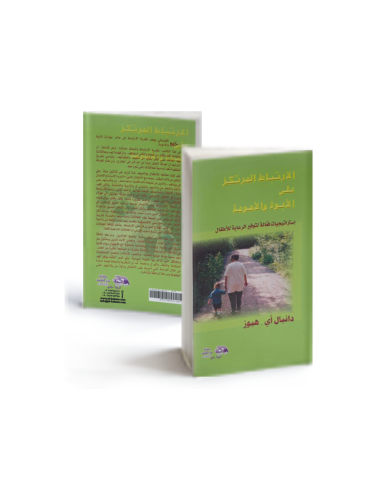Concluded Speech
ÙابØÙر بتتÙاØÙÂ
Ù٠دÙÙا اÙعاشÙ
ÙÙ ÙÙ ÙØظة Ø´ÙÙد
ÙÙجÙØ© بÙسابÙ
ÙÙر اÙÙÙا٠عÙÙÙ
ÙÙ٠اÙÙسا٠عاÙÙ
أشر٠Ùاعر
- On sale!
0.114 kg - 0.592 kg
ÙابØÙر بتتÙاØÙÂ
Ù٠دÙÙا اÙعاشÙ
ÙÙ ÙÙ ÙØظة Ø´ÙÙد
ÙÙجÙØ© بÙسابÙ
ÙÙر اÙÙÙا٠عÙÙÙ
ÙÙ٠اÙÙسا٠عاÙÙ
أشر٠Ùاعر
The late Carl Rogers, founder of the humanistic psychology movement, revolutionized psychotherapy with his concept of client-centered therapy. His influence has spanned decades, but that influence has become so much a part of mainstream psychology that the ingenious nature of his work has almost been forgotten. Houghton Mifflin is delighted to introduce this preeminent psychologist to the next generation with a new edition of this landmark book.
“Daniel Hughes has done more here than translate the science of attachment theory to the general reader. He offers readable, thoughtful, practical tools capable of transforming relationships. 8 Steps to Building Your Best Relationships has the power to change your life.” — Terry Real, founder of the Relational Life Institute (RLI) and author of The New Rules of Marriage
Carl Rogers was a stubborn warrior when he entered many battles - battles in the field of treatment of income with scientific medicine and psychiatry, who tried to prevent psychologists from treating patients..
“[A] practical text for students and professional interested in learning how to parent with attachment in mind…an excellent book, and I would recommend it to every trainee and to parents...” (The Journal of the Canadian Academy of Child and Adolescent Psychiatry)
A great book for helping to understand affliction. Very helpful for learning to use affliction for personal growth and for experiencing increased intimacy with God. I recommend it to anyone who has lost a loved one, lost a leg, lost a job and/or suffered any pain or loss during their life's journey.
Does this have anything to do with the Bible, the book that has profoundly influenced Western culture? Is there archaeological evidence that bears on the Bible? Are the narratives of the Bible, especially those from 3,000 and more years ago, myth or history? Is a scientific discipline like archaeology even compatible with an obviously religious book like the Bible? These are relevant questions that this book will seek to answer.’
This book is both a testament to a great thinker and a still vital strand of thought in the comprehension and critique of the modern organized world. It is essential reading for younger scholars and a radical reminder for those steeped in the tradition of a critical theory of society.









